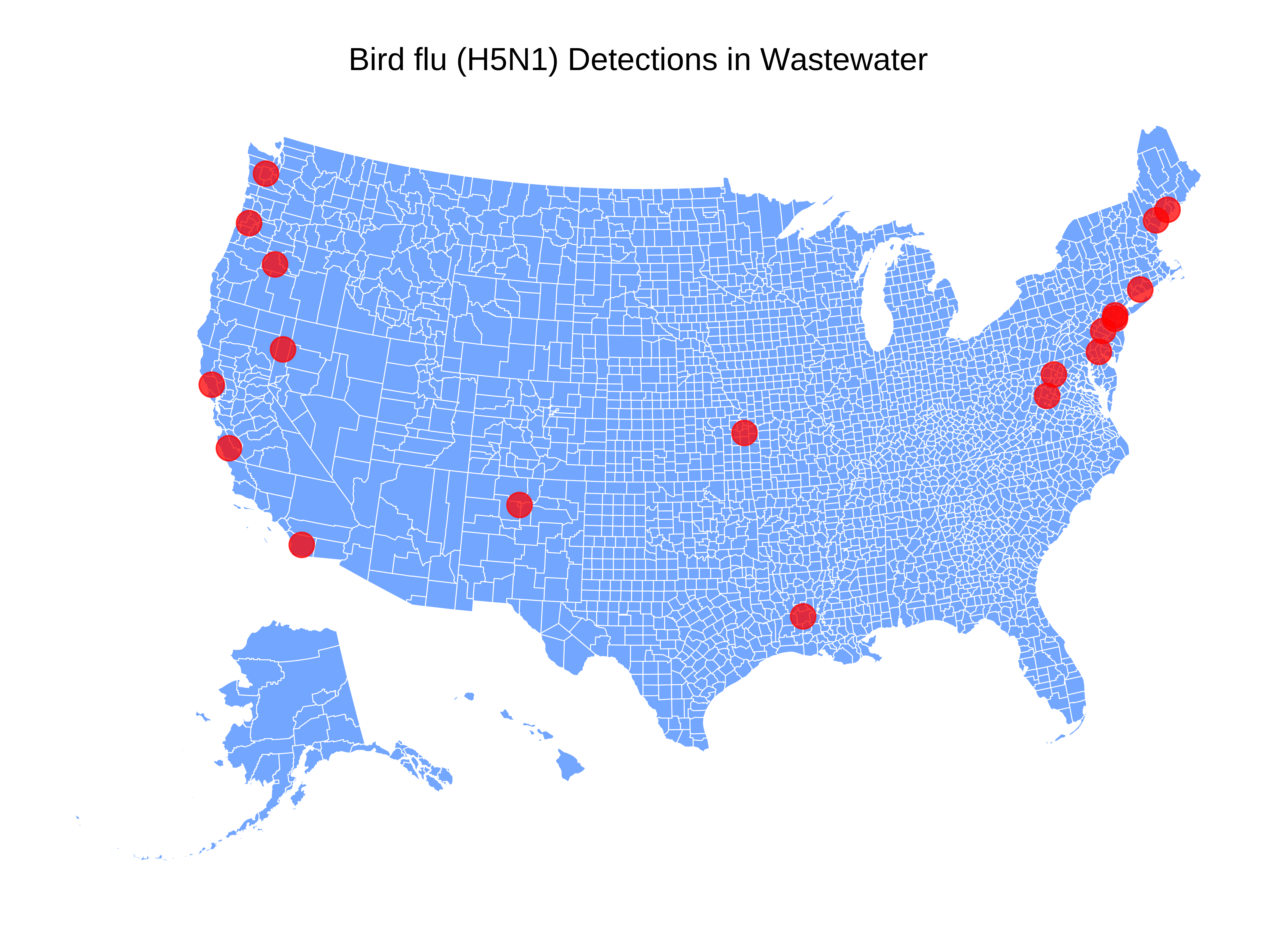At Biobot, we analyze wastewater across the country for various infectious disease pathogens....

Respiratory Virus Risk Reports
Comprehensive Insights for COVID-19, Influenza, and RSV
COVID-19, Influenza, and RSV Wastewater Monitoring in the U.S. | Week of October 26, 2024
Throughout the respiratory season, we analyze wastewater for the presence of respiratory syncytial virus (RSV) and influenza virus (types A and B). Together with COVID-19, these three pathogens are outsized contributors to our seasonal respiratory illness burden. In this data series, we’ll guide you through the wealth of data we’ve gathered from our Biobot Network of national sampling sites, aiming to shed light on emerging trends in respiratory virus activity and community viral load. Our goal is to equip you with information to make informed decisions.
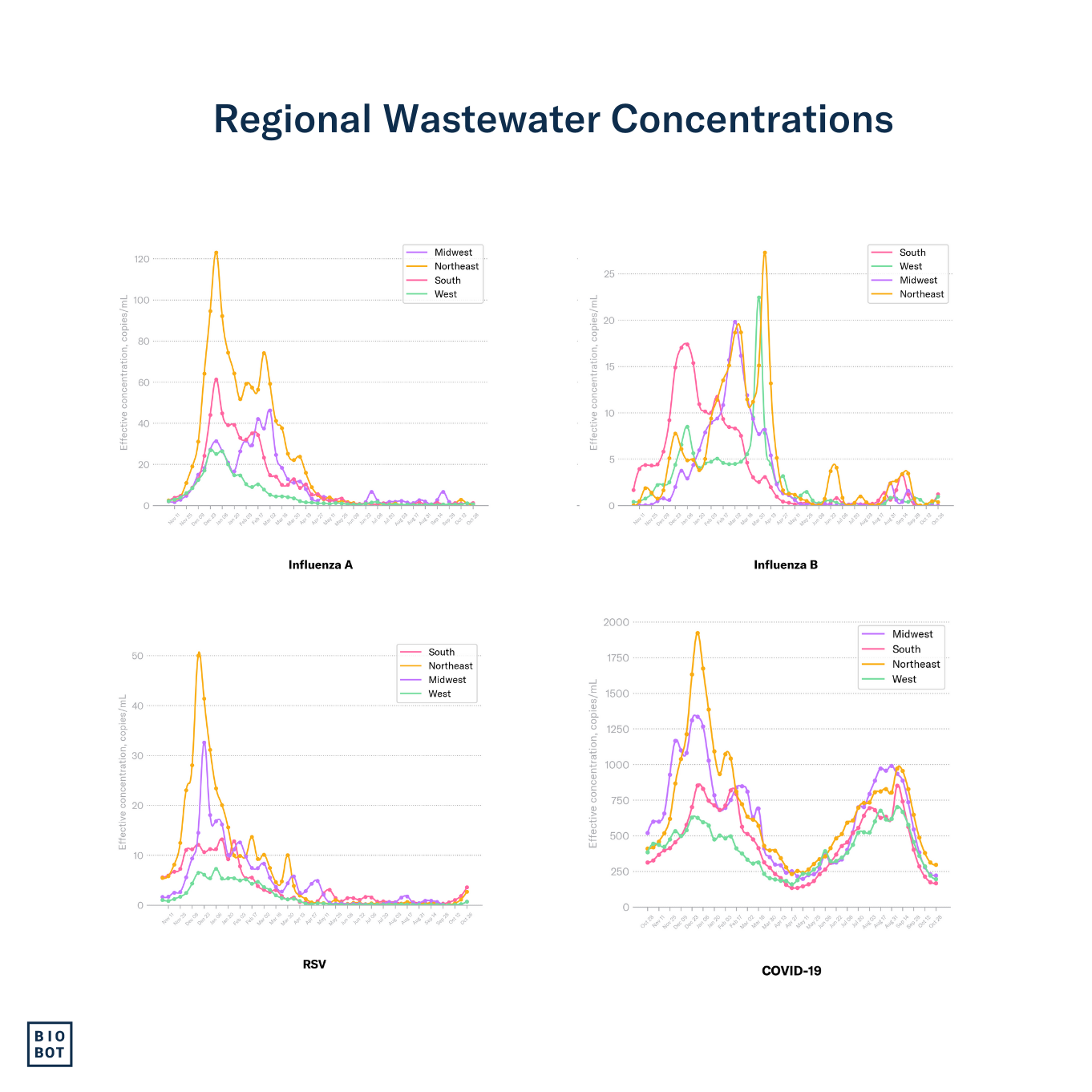
Data Note: Samples are collected from participating locations, and processed by our lab team on a rolling basis. Each point on the figure represents the weekly average concentration, from Sunday – Saturday (corresponding to the MMWR week), aligned to that week’s Saturday.
Contributors

Marisa Donnelly, PhD
Public Health Partnerships Epidemiologist
Previous Risk Reports
Summary: Week of 10/26/24
Biobot’s national wastewater network shows low levels of SARS-CoV-2, but with decreases beginning to slow down in week 43. RSV concentrations are increasing, marking the start of the RSV season, while influenza A remains low and stable. Influenza B concentrations continue to bounce around at low levels. National hospitalizations for COVID-19 continue to decline, currently at 1.3 per 100,000 people in week 42. National hospitalizations for influenza and RSV remain very low — both have 0.1 per 100,000 people through week 42.
The Bottom Line: While respiratory virus activity remains low before the season really takes off, now is a good time to be thinking about fall vaccines. Our recommendations to remain healthy are the same: if you feel unwell, minimize contact with others, consider wearing a mask in crowded areas, and stay current with vaccinations and boosters.
National Outlook
COVID-19
SARS-CoV-2 concentrations are at low levels nationally, though recent decreases are slowing down. This slowdown could be an early warning that COVID-19 activity may pick up again soon as we head into the respiratory season.
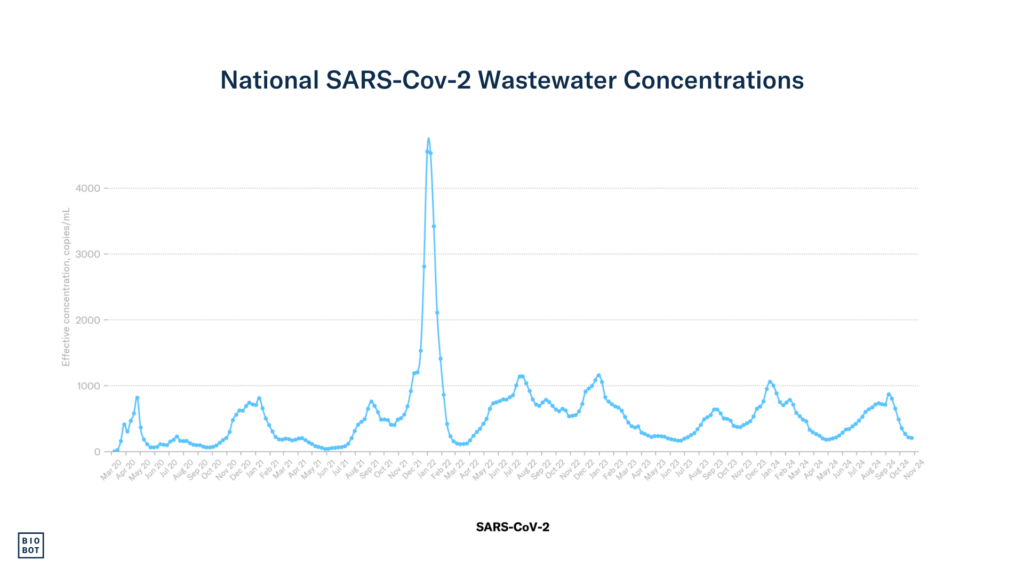
Influenza
Influenza A concentrations remain very low nationally, while influenza B concentrations are fluctuating at low levels.
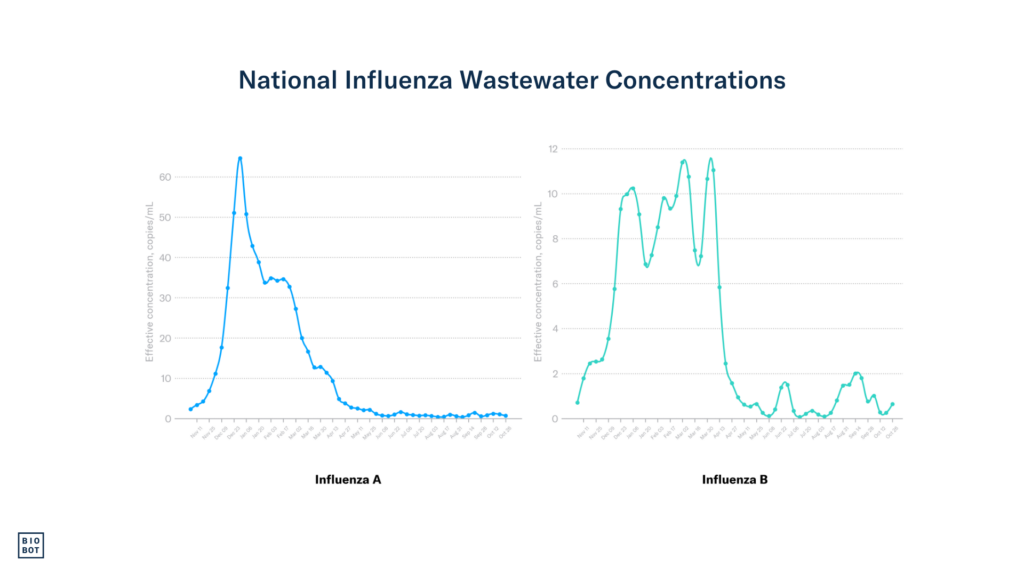
RSV
National RSV concentrations are increasing, signaling the start of the RSV season.
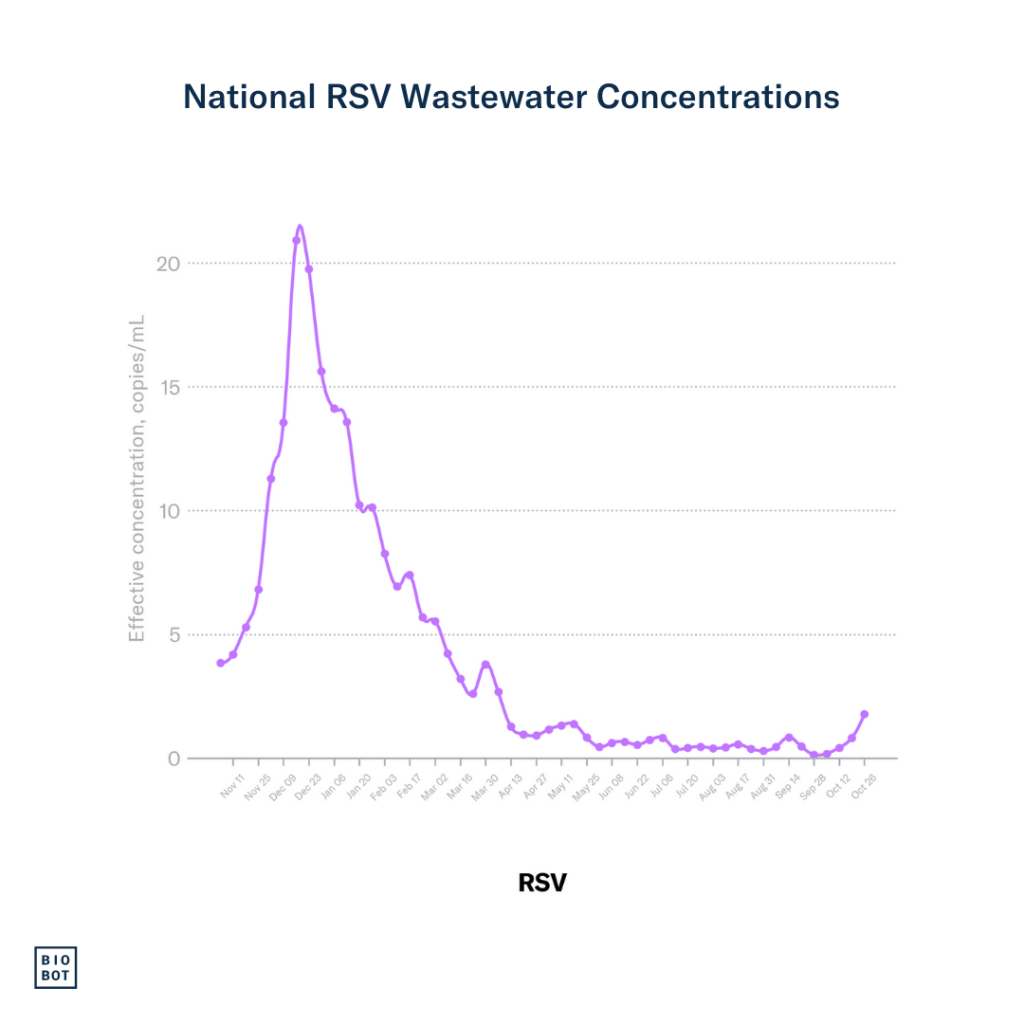
Regional
The South
COVID-19: SARS-CoV-2 concentrations in the South slightly declined.
Influenza: Influenza A concentrations remained low in the South while influenza B concentrations slightly increased.
RSV: RSV concentrations increased in the South.
The Midwest
COVID-19: SARS-CoV-2 concentrations in the Midwest slightly declined.
Influenza: Influenza A and B concentrations remained low in the Midwest.
RSV: RSV concentrations slightly increased in the Midwest.
The Northeast
COVID-19: SARS-CoV-2 concentrations in the Northeast slightly declined.
Influenza: Influenza A and B concentrations remained low in the Northeast.
RSV: RSV concentrations increased in the Northeast.
The West
COVID-19: SARS-CoV-2 concentrations in the West slightly declined.
Influenza: Influenza A concentrations remained low in the West while influenza B concentrations slightly increased.
RSV: RSV concentrations slightly increased in the West.
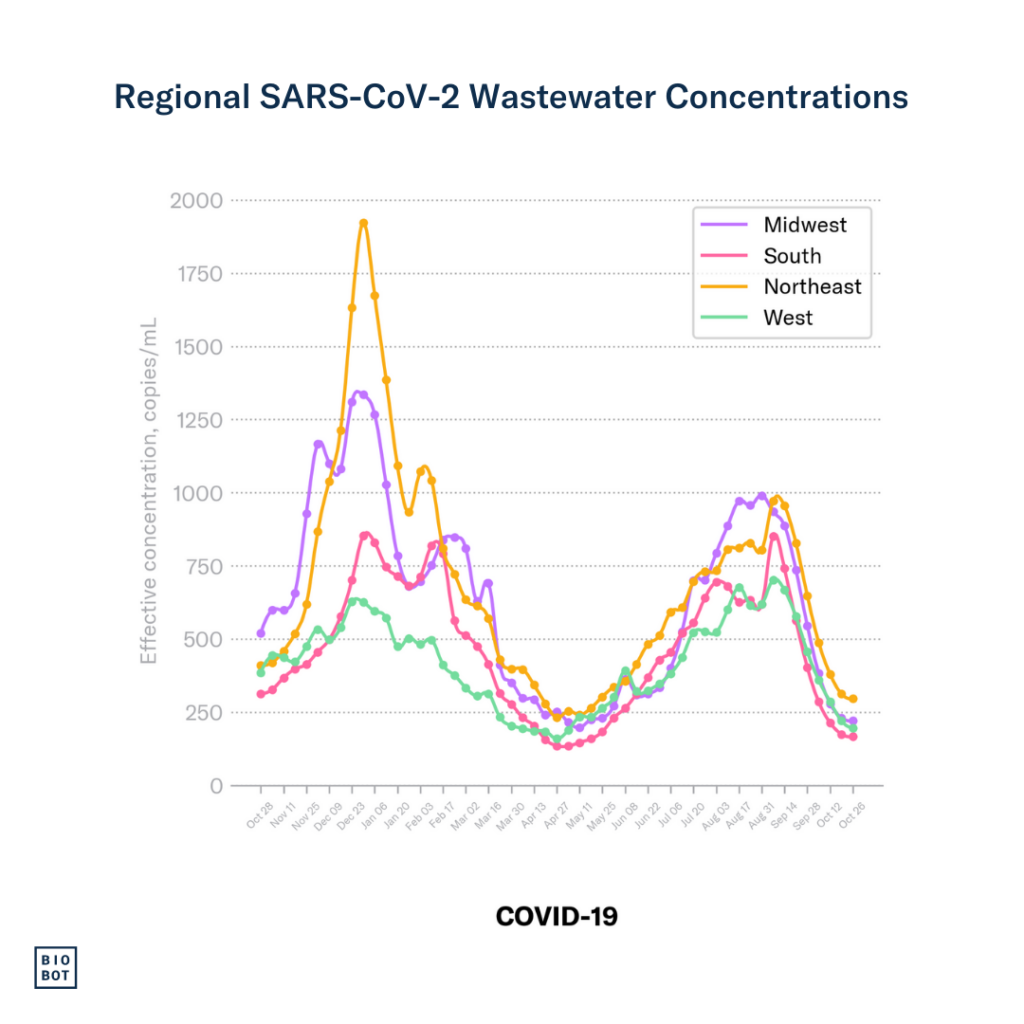
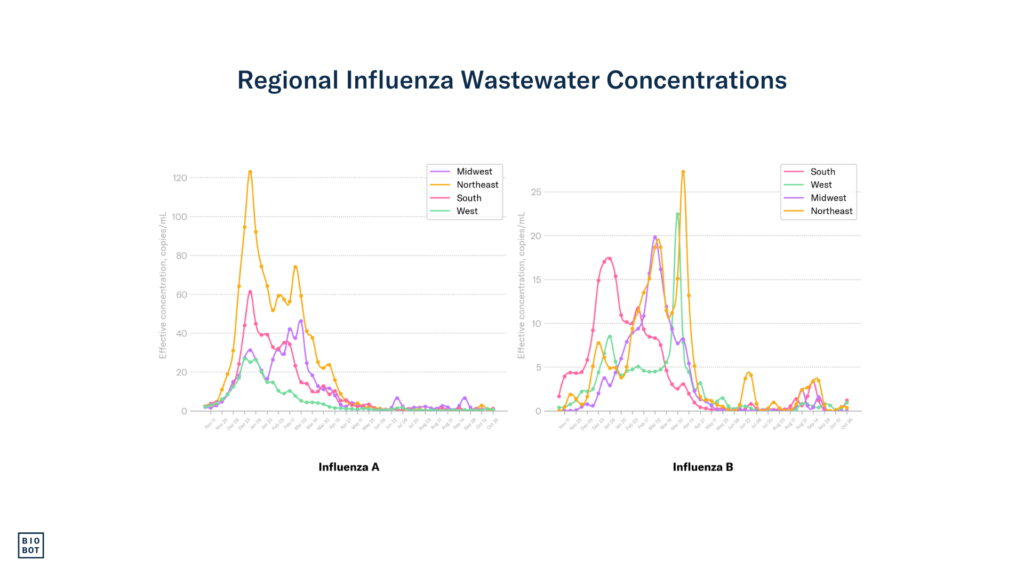
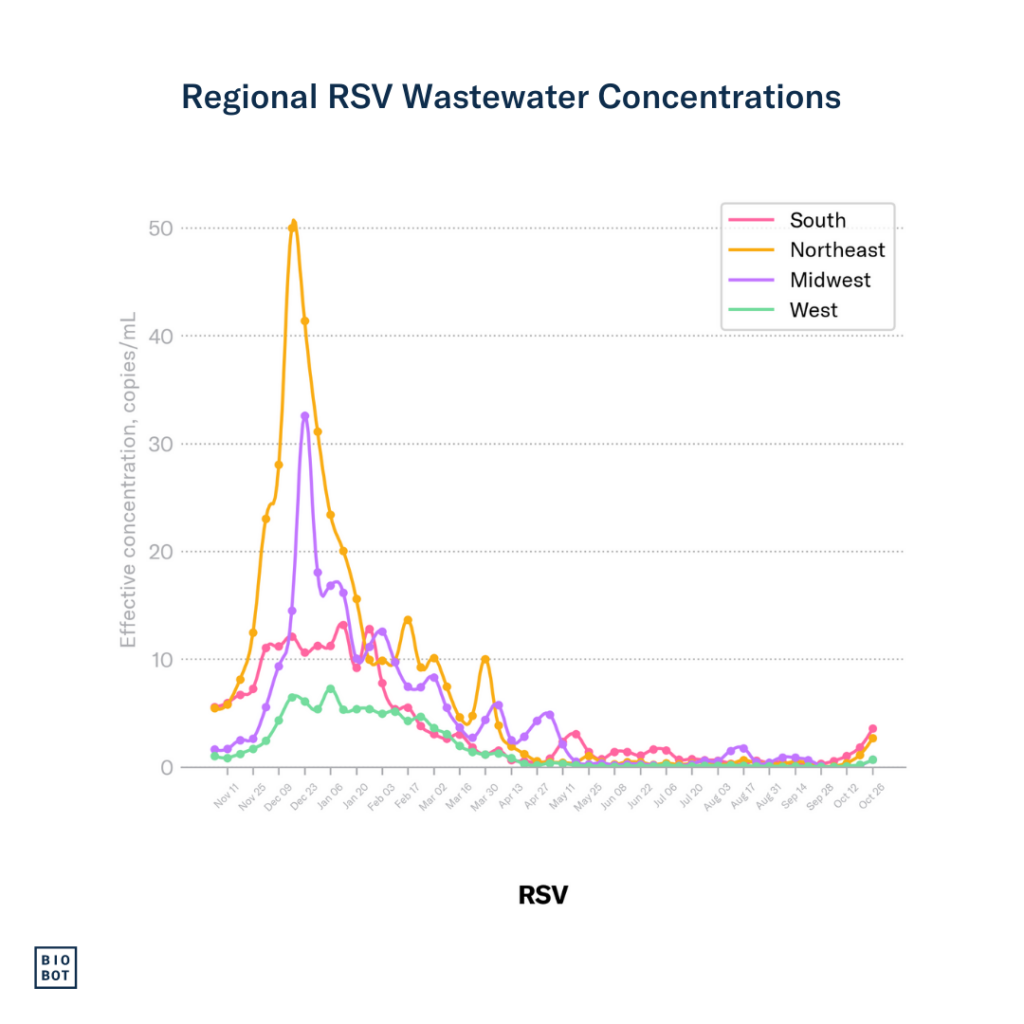
Footnotes:
We continue to monitor the evolving H5N1 influenza virus situation. As we do, a quick reminder that Biobot’s influenza A assay detects the H5N1 influenza subtype, which is an influenza A virus, but does not distinguish between the different subtypes of influenza A (e.g. H5N1 vs H1N1). Thankfully, we still have not seen large, widespread increases in influenza A concentrations. We will share any important updates as we have them via Twitter and in the risk reports.
Wastewater data from Biobot Analytics for RSV, influenza, and SARS-CoV-2 are through October 26, 2024 (MMWR week 43). Clinical data for RSV, influenza, and COVID-19 are from the Centers for Disease Control and Prevention. Updates to clinical data are through October 19, 2024 (MMWR week 42).




